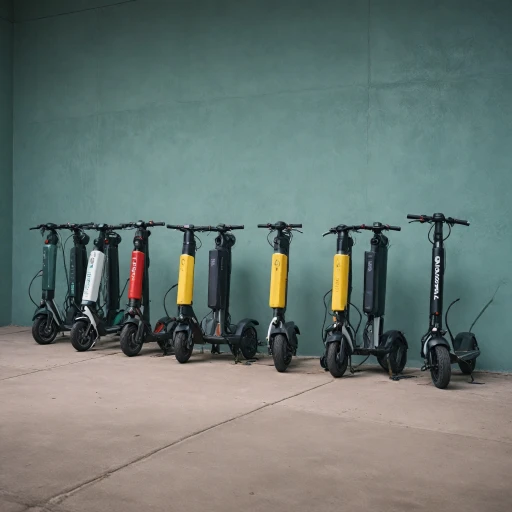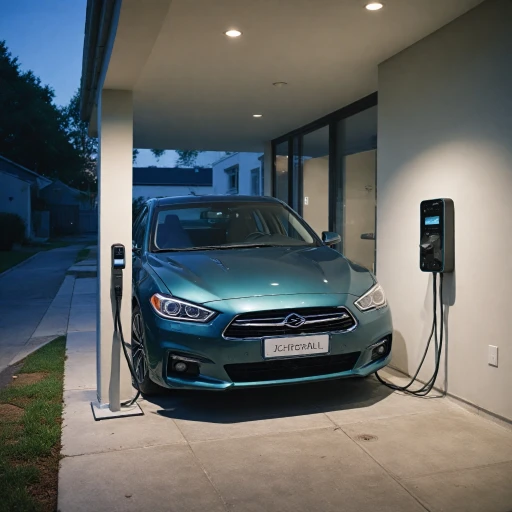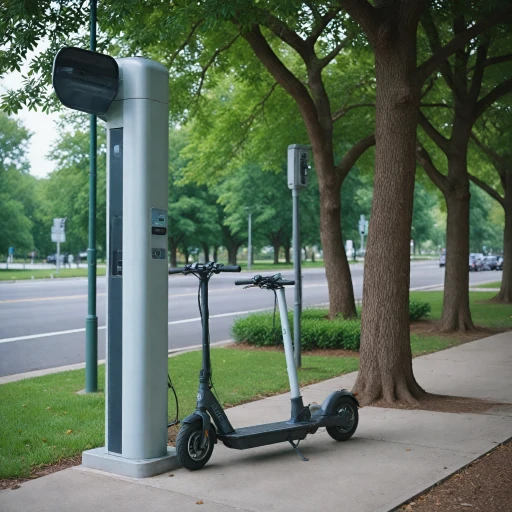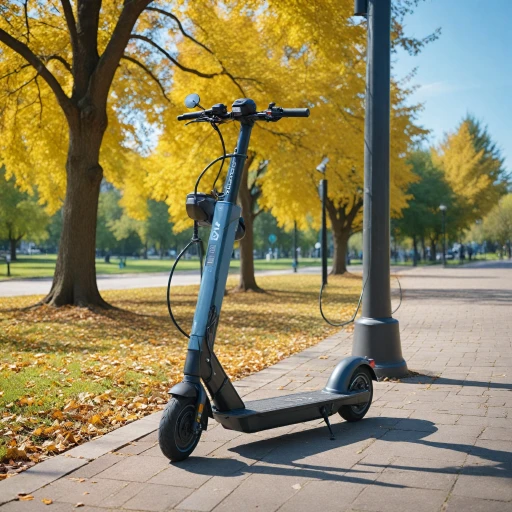
Understanding innogy Charging Stations
Decoding the innogy ebox and Echarge App for Scooter Enthusiasts
The utilization of innogy charging stations for electric scooters introduces users to a network of convenience and efficiency. With an emphasis on smart technology, innogy has effectively responded to the increasing demand for energy solutions that cater to electric vehicles, including electric scooters.
The innogy charging infrastructure is characterized by its various charging points across key urban areas. By incorporating smart meters and a user-friendly Echarge App, scooter owners are provided with accessible tools to start the charging process effortlessly. These charging stations are available in regular and smart versions, such as the innogy ebox smart, which optimizes energy use and offers insights into power consumption.
Within Germany, where the adoption rate of electric vehicles, particularly electric cars, is high, innogy's network plays a crucial role. Each station is equipped with standardized sockets, making it compatible with various scooter types and electric vehicles. Moreover, the use of RFID cards and app-based interactions ensures that users can initiate a charging session seamlessly.
Innogy's charging solutions not only highlight the importance of comprehensible energy management but also pave the way for sustainable urban mobility. These benefits set the stage for deeper discussions on topics like the role of charging stations in urban mobility and sustainability impacts, to be explored further in upcoming sections.
The Role of Charging Stations in Urban Mobility
Urban Transformation through Charging Networks
Electric scooters are revolutionizing urban mobility by offering an eco-friendly and efficient way to navigate crowded city streets. Innogy charging stations facilitate this transformation by providing reliable charging networks essential for keeping these electric vehicles running. In metropolitan areas, the availability and distribution of charging points is crucial. With well-positioned innogy stations across various locations, electric scooter users can easily access a power source when needed. Numerous charging options, including the smart and regular charger types, cater to diverse needs, ensuring energy is efficiently utilized. The integration of smart meters into these stations allows for better management of energy distribution throughout busy cityscapes. As a result, urban dwellers can enjoy an uninterrupted charging session, adding convenience to their daily routines. Collaboration with apps such as the echarge app helps users locate nearby charging points, check availability, and even start charging through their smartphones. Additionally, the seamless blend of innogy energy solutions ensures that electric vehicles, including both scooters and cars, can share the same infrastructure. This holistic approach to urban mobility enhances the appeal of sustainable transportation options amidst rising concerns about environmental impact. Understanding the charging process for electric scooters can further illuminate how these systems work in tandem with urban infrastructure developments. More insights are available here.Sustainability and Environmental Impact
Environmental Benefits of innogy Charging Stations
The sustainability and environmental impact of innogy charging stations play a crucial role in the push for greener urban mobility. With the increasing shift towards electric vehicles, including electric scooters, the use of electric power over traditional fuel sources significantly reduces carbon emissions. This aligns with global efforts to combat climate change by minimizing the ecological footprint of transportation.
innogy stations are part of a smart network designed to optimize energy use. These stations, like the ebox smart, are equipped with smart meters and can adjust charging times to coincide with periods of low energy demand. This ensures efficient energy consumption and reduces strain on the power grid.
In Germany and beyond, the integration of innogy's smart charging technology into urban infrastructure has been proving to lower the carbon footprint of commuting. Furthermore, the expansion of charging networks, including the availability of multiple charging points across cities, promotes the use of electric scooters, aiding in the reduction of vehicular emissions.
The stations are designed to support various electric vehicles, from scooters to cars, with charging points compatible with regular and type sockets. The echarge app, coupled with an RFID card, allows users to find nearby stations and effectively manage their charging sessions. This accessibility encourages more people to transition to electric vehicles, fostering a greener urban environment.
Furthermore, the production and operation of e-boxes and other charging solutions by innogy contribute to a more sustainable industrial process. By optimizing resources and reducing waste, these chargers enhance the environmental benefits of electric transportation infrastructure.
As electric scooters and cars gain popularity, the environmental advantages of using innogy charging stations contribute to a cleaner, more sustainable urban landscape, promoting a healthier future for cities worldwide.
User Experience and Accessibility
Enhancing User Experience with Easy Accessibility
Innogy charging stations are designed to maximize user convenience, providing a seamless experience for electric scooter riders. With the increasing integration of smart technologies, users can easily locate and access these charging points through the echarge app. This not only simplifies the process of finding a charging station but also allows users to check the availability and status of chargers in real-time. One major advantage for users is the flexibility in payment options. The availability of the RFID card system enables users to start charging effortlessly. Additionally, the app offers multiple payment methods, making it easy for users to adapt according to their preferences and needs. The network of charging stations across Germany and other regions is designed to accommodate a wide range of electric vehicles, including both scooters and cars. These stations offer various types of sockets and charging power, catering to the diverse requirements of electric vehicle users. Whether you own an electric car or a scooter, finding the right type of charging option is straightforward. Furthermore, accessibility is enhanced by the strategic placement of these stations. By focusing on key urban areas, riders can enjoy reduced wait times and ensure their vehicles are charged and ready to go, promoting efficient urban mobility. Overall, Innogy's commitment to user-friendly experiences through smart technology and widespread accessibility encourages more riders to embrace electric vehicles, contributing to a cleaner environment and more efficient city transportation systems.Economic Benefits for Cities and Users
Economic Advantages for Urban Areas and Riders
Electric scooters, when paired with efficient charging infrastructure like innogy charging stations, offer notable economic benefits both for urban areas and individual users. These benefits stem from the integration of smart technology and the expansion of charging networks.
For cities, the deployment of charging stations can lead to a reduction in traffic congestion and pollution, which in turn can decrease infrastructure maintenance costs. By supporting a network of charging points, cities can encourage the use of electric vehicles, including scooters, which are generally more affordable to maintain than traditional vehicles. This shift can result in significant savings on public health expenditures due to improved air quality.
From the perspective of scooter users, the economic benefits are equally compelling. The cost of charging an electric scooter at an innogy station is typically lower than refueling a conventional vehicle. With the innogy ebox smart and other chargers, users can monitor their energy consumption through the echarge app, allowing for more efficient energy use and cost savings. Additionally, the availability of regular and smart meters at these stations ensures that users are only billed for the energy they consume, making it a cost-effective solution for daily commuting.
Moreover, the convenience of starting a charging session with an RFID card or through the app enhances user experience, reducing the time and effort required to charge. This ease of use encourages more people to adopt electric scooters, further driving down the demand for fossil fuels and contributing to a more sustainable urban environment.
In summary, the economic benefits of innogy charging stations extend beyond mere cost savings. They play a crucial role in promoting sustainable urban mobility, benefiting both cities and their inhabitants by fostering a cleaner, more efficient transportation ecosystem.












